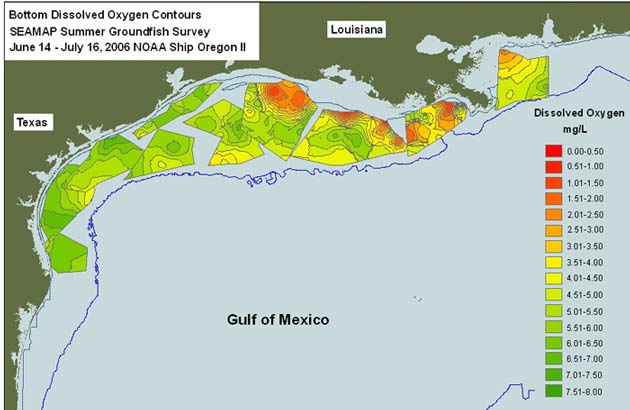Scientists Predict Bigger Gulf 'Dead Zone' This Year

A dead zone in the Gulf of Mexico created by lack of oxygen will be larger than normal this year, scientists predicted today.
The dead zone is an area where oxygen levels drop too low to support most life in water at or near the bottom of the sea. It occurs every summer.
It is caused by nutrients from fertilizers, such as nitrogen and phosphorus, that flow in from rivers. The nutrients stimulate algal growth, which settles to the bottom and decays, consuming oxygen faster than it can be replenished from the surface.
Researchers expect the dead zone this summer to cover 6,700 square miles, an area half the size of the state of Maryland. Since 1990 the zone has averaged 4,800 square miles.
The prediction, based on nutrient runoffs, was made by a team of scientists from NOAA's National Centers for Coastal Ocean Science, Louisiana Universities Marine Consortium and Louisiana State University.
The zone is also called a hypoxic zone, and it can kill fish and other creatures.
"We are anticipating a larger hypoxic zone this summer because the nitrate loading this May, a critical month influencing the size of the area, is higher than last year," said LSU researcher Eugene Turner.
Get the world’s most fascinating discoveries delivered straight to your inbox.
Research indicates that nearly tripling the nitrogen load into the Gulf over the past 50 years has led to the increased hypoxia problem.
- Top 10 Ways to Destroy Earth
- Gulf's 'Dead Zone' Less of a Mystery
- Scientists Issue Dire Warning on Marine Life
- Agriculture Covers 1/3 of All Land
- Erie Dead Zone



